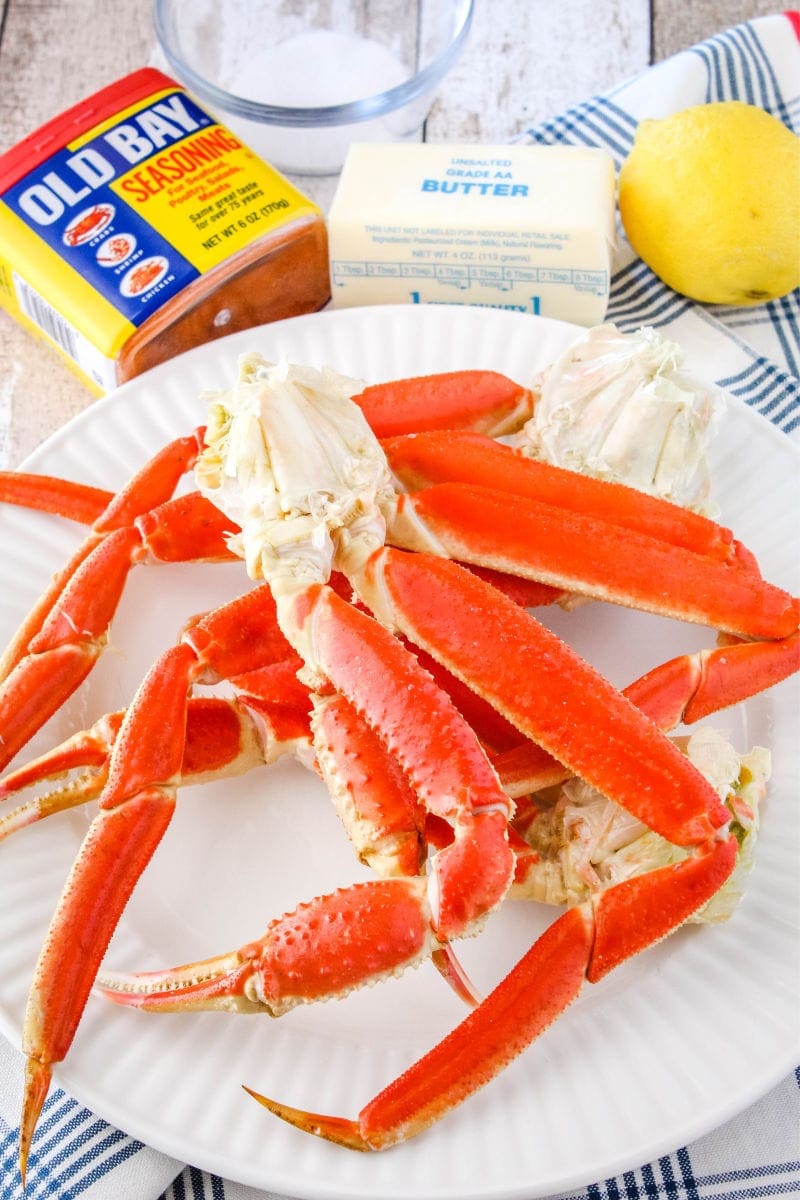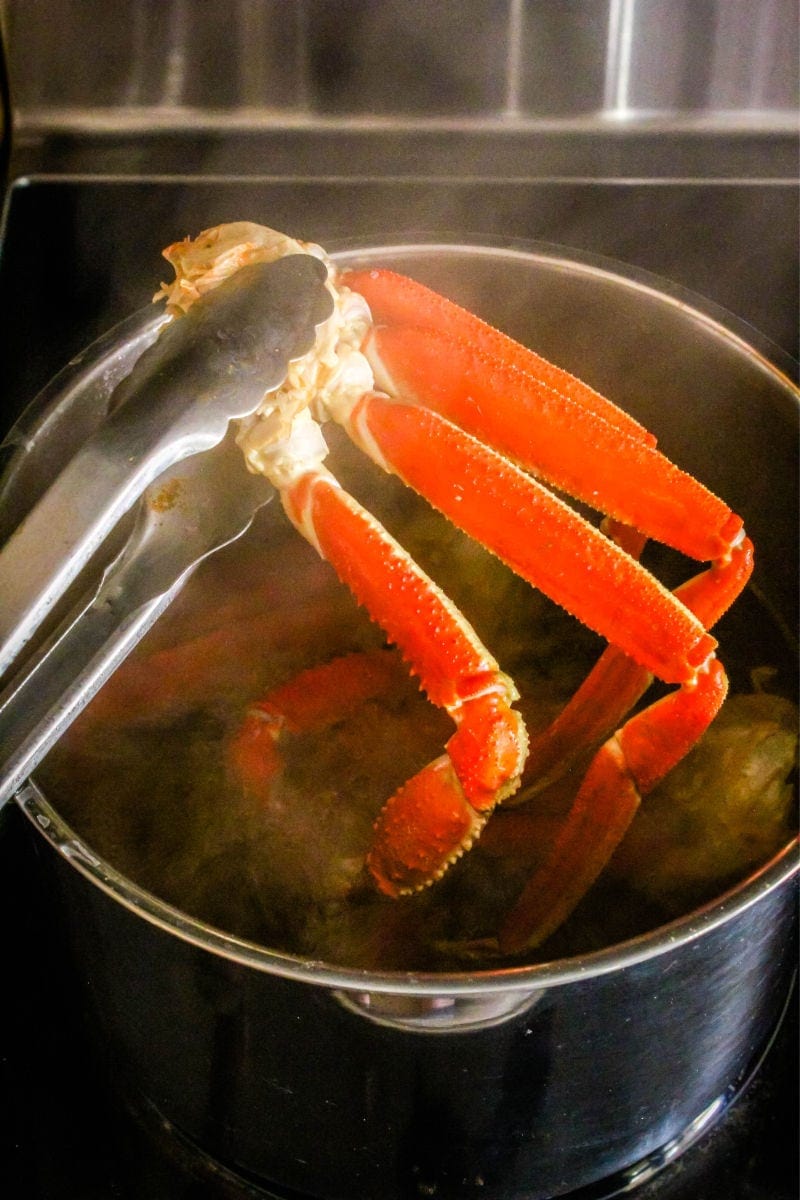You don’t need much time or skill to make crab legs. They’re ready in just 5 minutes and are the best way to make yourself a fancy meal at home.
Boiling snow crab legs may seem intimidating but it’s actually a simple process that anyone can master. With just a few basic steps you can enjoy tender, succulent crab legs bursting with sweet flavor. As a seafood lover and home cook, I’ve boiled my fair share of crab legs over the years. In this article, I’ll share my tried and true method for how to boil snow crab legs perfectly every time.
Why Boiling Is the Best Cooking Method
Snow crab legs are most commonly boiled because it’s the easiest quickest and most foolproof way to cook them. Boiling gently poaches the crab meat while infusing it with flavor. The hot water firms up the flesh just enough while still preserving the crab’s delicate texture. Boiling also allows you to season the water, adding even more flavor to the crab.
While you can opt to steam, bake or grill snow crab legs, boiling remains the best bet for optimal taste and texture. The moist heat quickly cooks the crab while keeping it tender. Since the legs come pre-split, the boiling water easily penetrates inside to heat the meat through. Skipping the boiling step by cooking the legs another way runs the risk of ending up with underdone crab.
Step-By-Step Boiling Instructions
Follow these simple step-by-step instructions for perfect boiled snow crab legs every time:
1. Purchase Frozen or Thawed Legs
You can purchase snow crab legs frozen or thawed. I prefer thawed since they take less time to cook. But frozen legs work too if you adjust the boiling time. Either way, look for legs labeled as “snow crab” and avoid any with dry, cracked or smelly shells. For 4 people, you’ll need about 2 pounds of legs.
2. Fill a Pot With Enough Water to Cover the Legs
Use a large stockpot and add enough water so the legs will be fully submerged. The crabs will absorb water as they cook, so be sure to add extra. Bring the water to a rapid boil before adding the legs.
3. Season the Water
For added flavor, season your boiling water. Good options are Old Bay seasoning, lemon slices, garlic, parsley, peppercorns or bay leaves. Use 1-2 tablespoons of Old Bay or 3-4 garlic cloves, lemon slices, etc.
4. Gently Lower the Legs Into the Water
Once boiling, gently lower the legs into the pot using tongs. Don’t dump them in or the shells can crack. Maintain a steady boil as they cook.
5. Cook For 4-8 Minutes For Thawed Legs
Cooking time depends on whether they’re thawed or frozen. For thawed legs, boil for just 4-6 minutes. Frozen legs need 8-10 minutes. The shells will turn bright red when fully cooked.
6. Drain and Serve Immediately
Drain the cooked legs and serve immediately with melted butter, lemon wedges and plenty of napkins. Cracking open the hot, juicy legs at the table is all part of the fun!
Handy Tips for Success
Follow these useful tips for perfect snow crab legs every time:
- Check for doneness by looking for red shells or probing the meat with a fork to be sure it’s hot throughout.
- Resist the urge to overcook. Crab can quickly go from tender to rubbery.
- Serve with bibs, mallets and seafood crackers to make eating the legs easier.
- Provide small dishes for empty shells to keep the table tidy.
- Show guests how to break open the joints and pull out the meat.
- Refrigerate any leftover crab for up to 2 days and use in salads, pastas or sandwiches.
Common Boiling Questions
If you’re new to preparing snow crab at home, here are answers to some common questions:
How much water do you need? Fill your pot with enough water so the legs are fully submerged with room to move. A 16-20 quart pot usually works for 2 pounds of legs.
Do you add salt? Yes, add 1-2 tablespoons of salt to season the water.
Do you add anything else for flavor? You can add lemon, garlic, Old Bay, herbs or other seasonings to the water. This infuses the crab with extra flavor.
Can you boil frozen crab legs? Absolutely. Just allow a few extra minutes of cooking time. Look for the shells to turn red.
How do you know when they’re done? Check for bright red shells and opaque, flaky meat. If unsure, poke a fork into the meat to check for doneness.
Do you rinse them after boiling? Nope. Drain well and serve immediately for the best flavor.
Enjoy Your Tender, Sweet Crab Legs

Why We Love This Recipe
When it comes to dining out, I’m a sucker for crab. It’s my favorite restaurant food to order. This isn’t exactly cheap, but I like to treat myself to it every once in a while.
The good news is that you can make snow crab legs at home for a lot less money than going out to a fancy restaurant. It only takes 5 minutes and tastes just as good.
There’s nothing tricky to this crab recipe. You can make as much or as little crab as you want. I usually make 2 pounds, and each person gets 1 pound. Put the crab in some salty water that has been boiled, and then take it out when the timer goes off.
- Crab legs – Snow crab or king crab. This method can also be used to boil blue crab or dungeness crab.
- Water – For boiling the crab.
- Salt—This is for adding salt to the water, which will make the crab taste better.
- People use Old Bay seasoning on seafood more than any other seasoning mix. It has 18 different spices in it, such as black pepper, celery salt, mustard, paprika, salt, and more.
- Lemon wedges – Crab with lemon is a perfect pairing.
- unsalted butter—Crab legs are already pretty salty, so you don’t need much more salt.

How to Boil Snow Crab Legs
See the recipe card below for full, detailed instructions
This method is my go-to and the one I include in detail in the recipe card below. In this section, however, I’ll include tips for steaming and grilling as well.
- To make a big pot of water boil, add salt and Old Bay.
- As the water starts to boil, melt the butter in a small saucepan over medium-low heat. It only takes a minute to cook the butter until it foams. When you take the pan off the heat, leave the butter in it for 5 minutes while the crab cooks.
- Next, place the crab legs into the boiling water. (I use tongs!) Boil the crab for 5 to 6 minutes, or until it’s warm and smells good.
- Then, take the crab out of the pot with tongs and put it on plates.
- Pull any solids off the top of the butter with a spoon. Then pour the butter into two small bowls.
- You can add a little more Old Bay to the crab legs, but I like to do it. Serve right away with the clarified butter and lemon wedges.

How To Cook Frozen Snow Crab Legs
Can You boil snow crab legs?
Before you start boiling your snow crab legs, you need to thaw them first. This is important because it will ensure that they cook evenly. You can thaw the crab legs in the refrigerator overnight or place them in a colander under cold running water for about 30 minutes. Fill a large pot with enough water to cover the crab legs.
How long do you cook snow crab legs?
Allow the legs to cook for about 4-6 minutes. Cooking times may vary depending on the size of the legs, so adjust accordingly. Using tongs, carefully lift the cooked snow crab legs from the boiling water, allowing any excess water to drain back into the pot. Place the hot legs on a platter or a large serving dish. Step 5: Enjoy!
How do you boil crab legs?
To boil crab legs, make sure you have a large enough stockpot to fit them. Place a steamer basket over 1 inch of water. Place the crab legs in the steamer basket and bring the water to a boil. Once boiling, reduce the heat to a simmer and cover the stockpot.
How do you thaw snow crab legs?
To thaw snow crab legs, you can place them in a colander under cold running water for about 30 minutes. Alternatively, you can leave them in the refrigerator overnight. Once thawed, fill a large pot with enough water to cover the crab legs. Add salt and bring the water to a rolling boil. You can also add other seasonings like garlic, bay leaves, or lemon juice to enhance the flavor.
